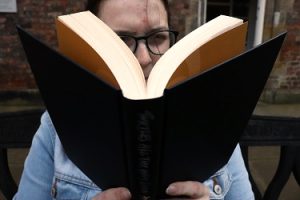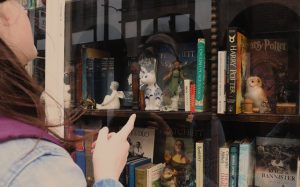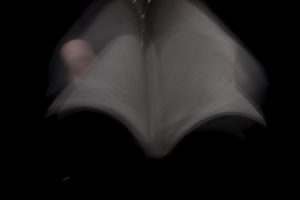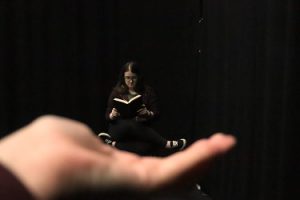Contextualising Statement
In collaboration with a whole production team, I have created a live ten-minute news show. One of the most important aspects of this task was working well with a large team of people to think of a concept for a show and develop it to the point where it could be filmed live. It was essential that I was able to put across my own ideas while listening to the ideas of others so that, as a group, we could find one strong concept to build from. Collaboration was also important in working out aspects of the show such as timings and set design, as everybody’s input was considered so that we could make an interesting and well organised artefact at the end.
Another way in which I worked collaboratively in the production of this artefact was during the planning and filming of one of the VTs, during which I worked closely with a much smaller group. It was our responsibility to plan, film and edit this VT while consulting with both the director and producer to ensure that what we produced was in line with their vision for the final show. Despite there being some issues with sound in the first few attempts at filming, communicating our issues and ideas to each other meant that we were able to produce a high-quality VT suitable for the overall show that we were creating. All of this really developed my communication skills in a professional environment.
These skills became even more important during the live recording session when I took on the role of PA. As PA I personally had to communicate effectively with both the gallery and the studio, ensuring that everybody knew what was coming next and when so that the show ran smoothly. Although this was difficult at first in rehearsal due mainly to confidence, in the final live recording I was able to communicate effectively with my team, meaning we could keep timings right and even get the show back on track when the credits began rolling too early at the end. (Bermingham, Talbot – Smith, Symons and Angold – Stephens, 1975)
Health and safety had go be considered throughout the entire production of this artefact and going out into the public to film the VTs posed the most risks. As we were filming the public, it was important to remain polite and respectful at all times to avoid any anger towards us which was a potential hazard. It was also essential that consent was obtained from every contributor and that they were told exactly what we were filming for during this process. Filming on location also increased the risks posed by road traffic. However, these were easy hazards to avoid by simply filming on the pavement away from the roads, while still being considerate of pedestrians at the same time. Due to filming in January, it was also important to consider the potential hazard of weather. This meant making alternative plans if the weather prevented filming members of the public in the street. Although this was taken into consideration, the weather didn’t pose any risk in the end, so we could film as originally planned.
Reference List
Bermingham, A., Talbot – Smith, M., Symons, J. and Angold – Stephens, K. (1975) The Small Television Studio. London, Focal Press.





